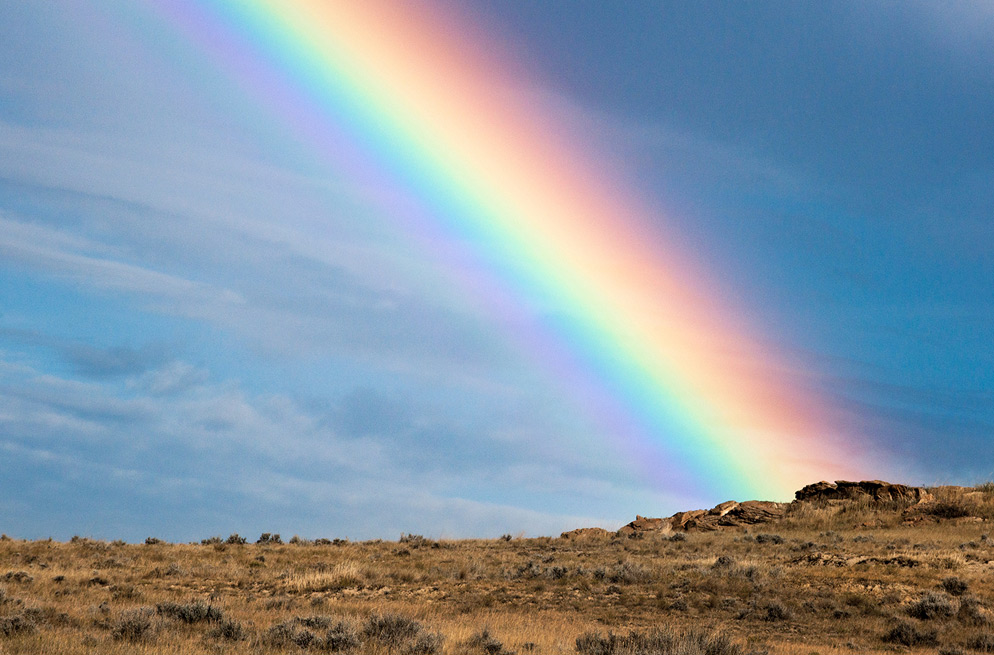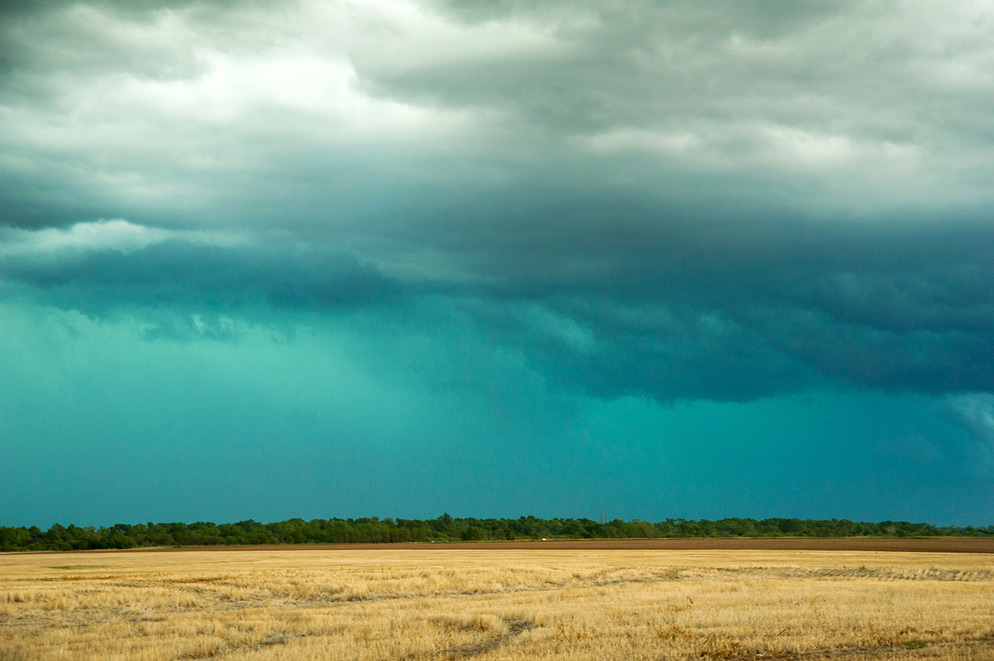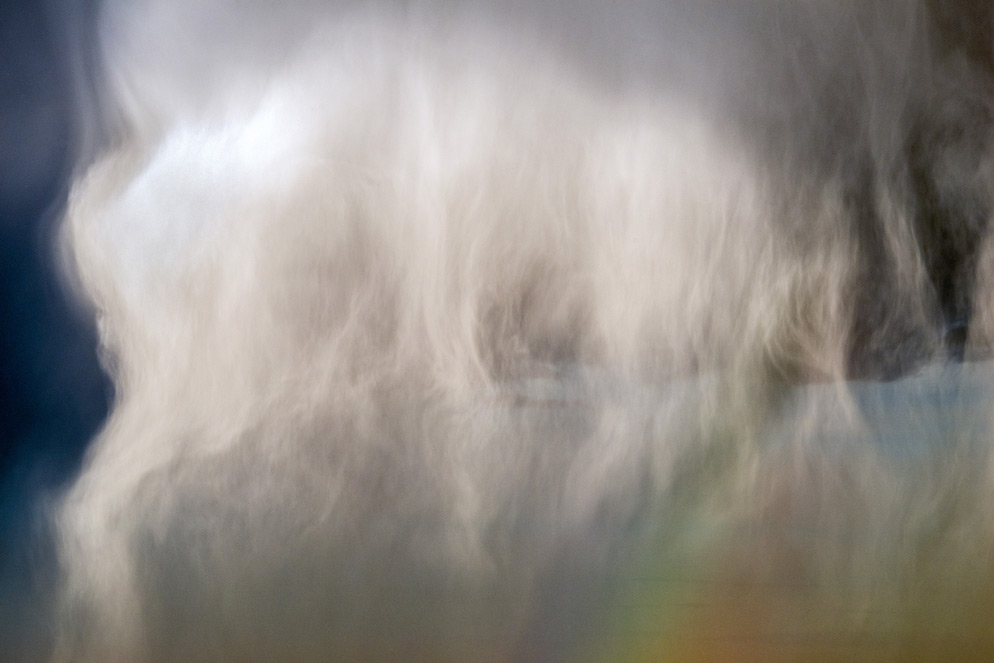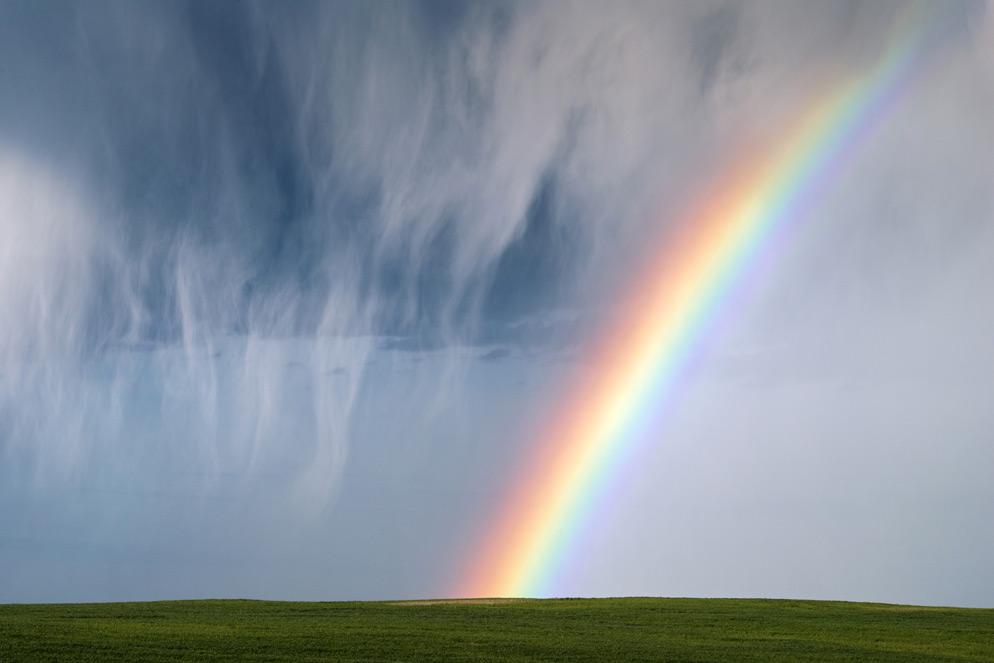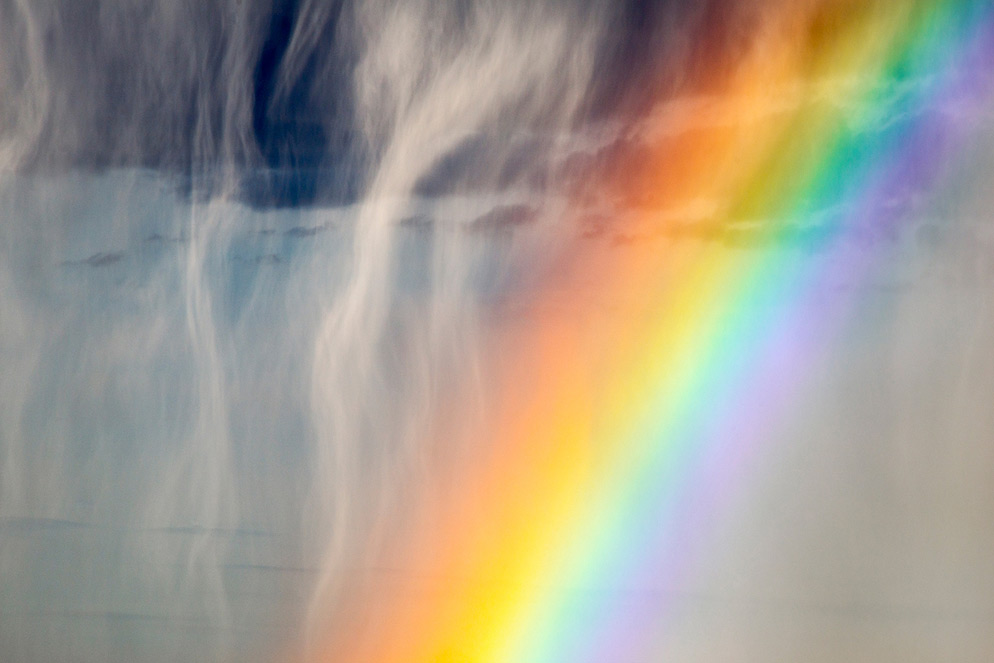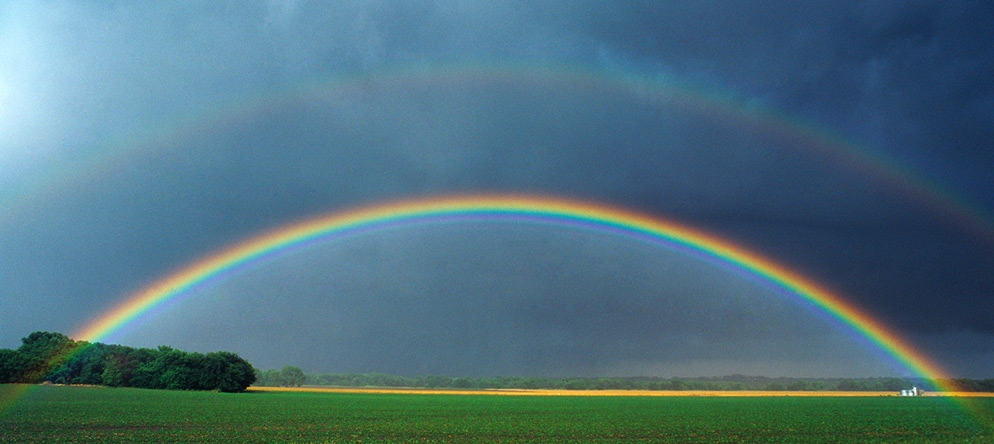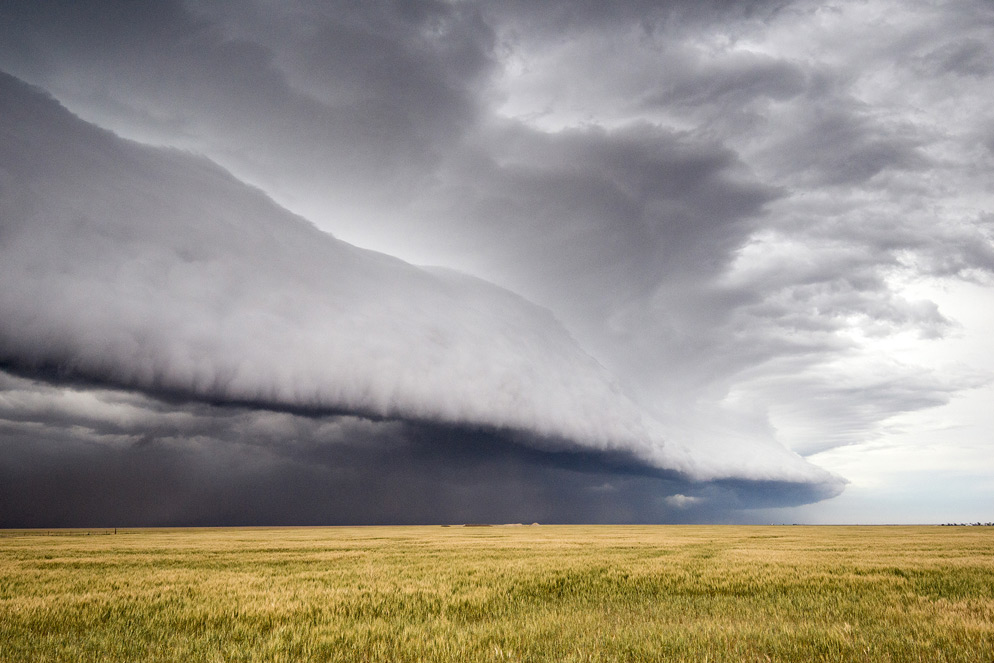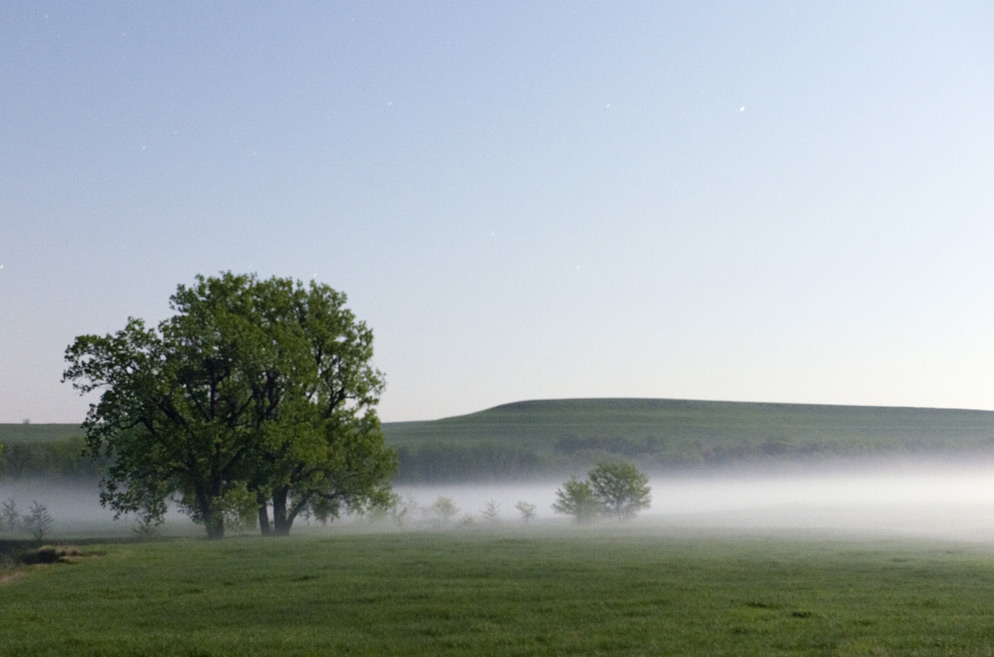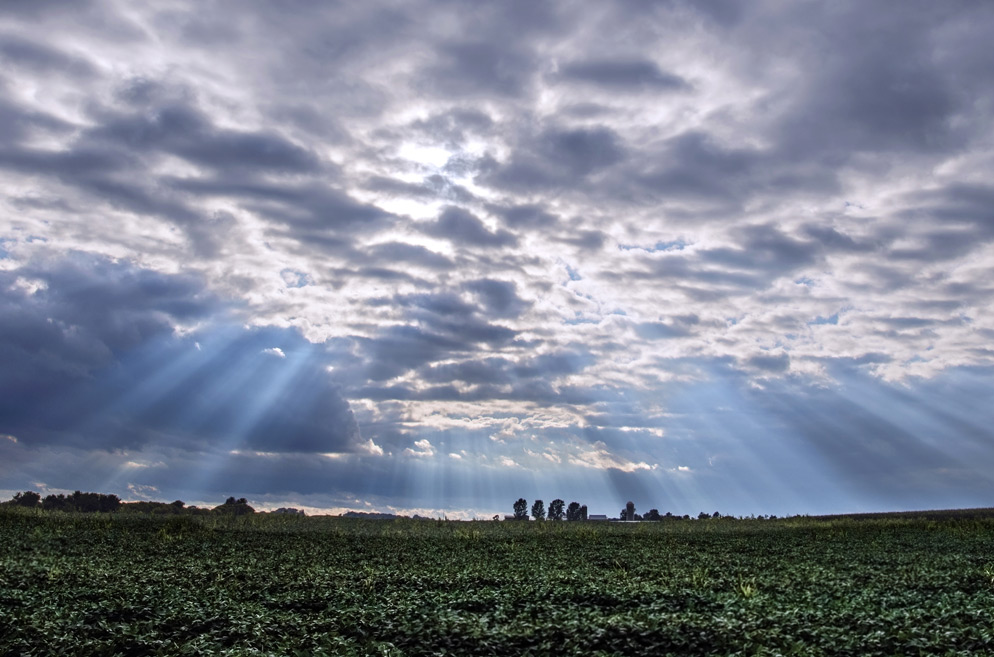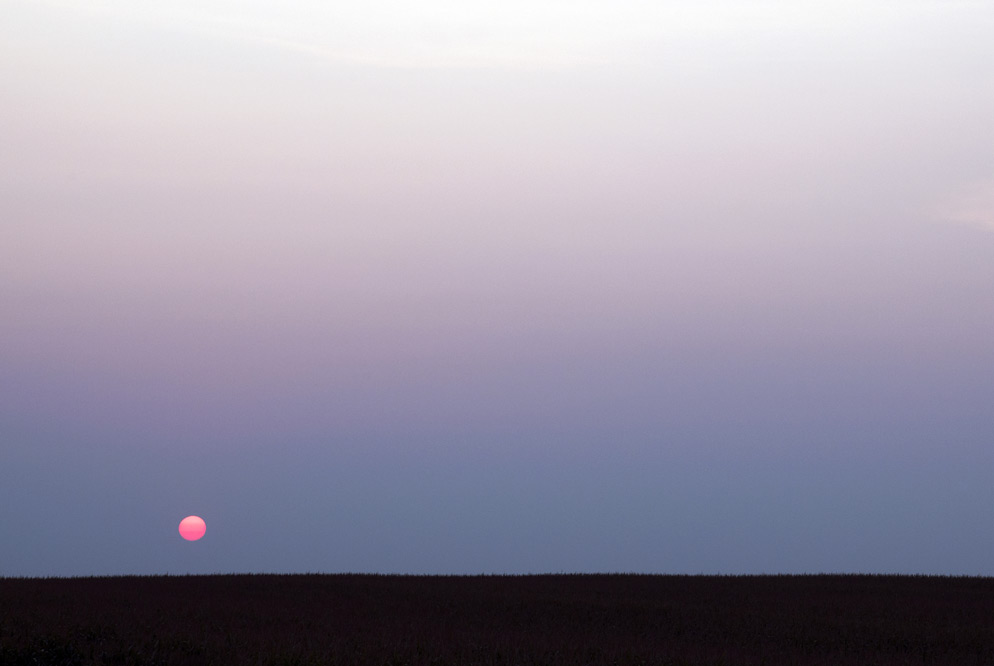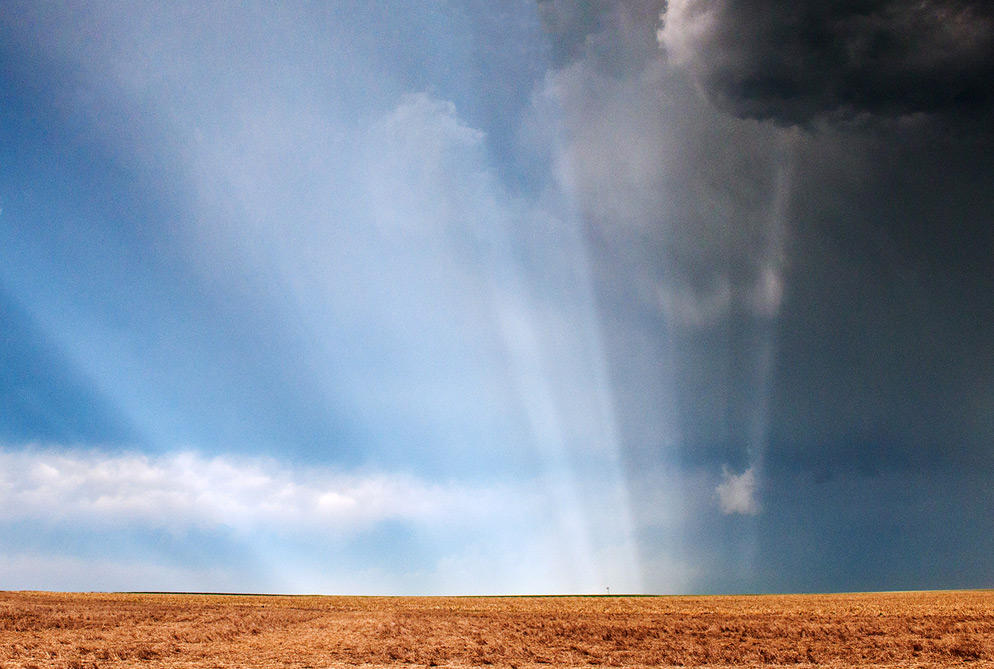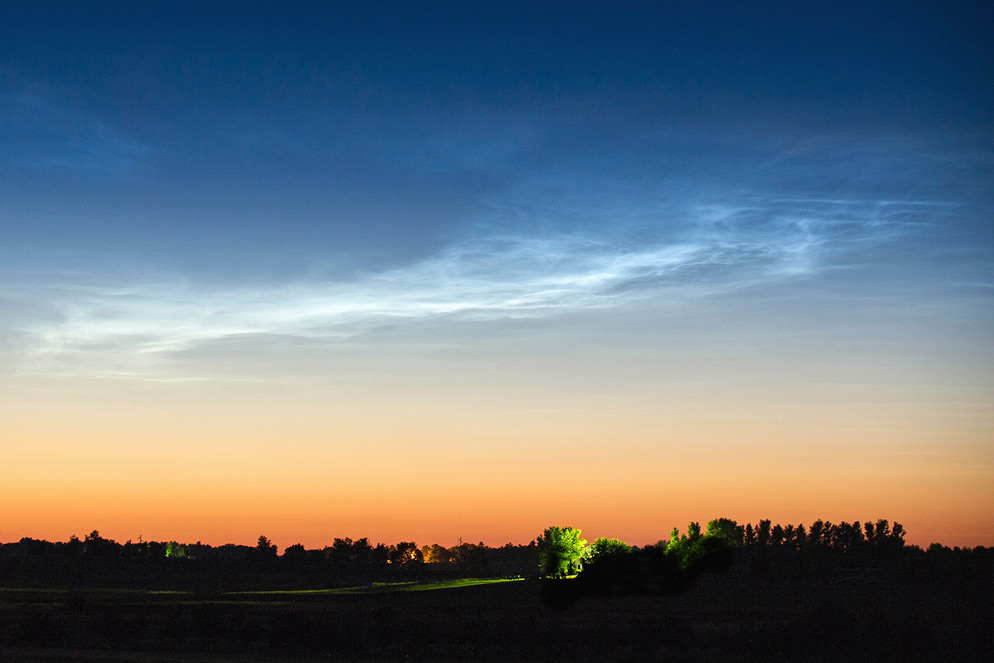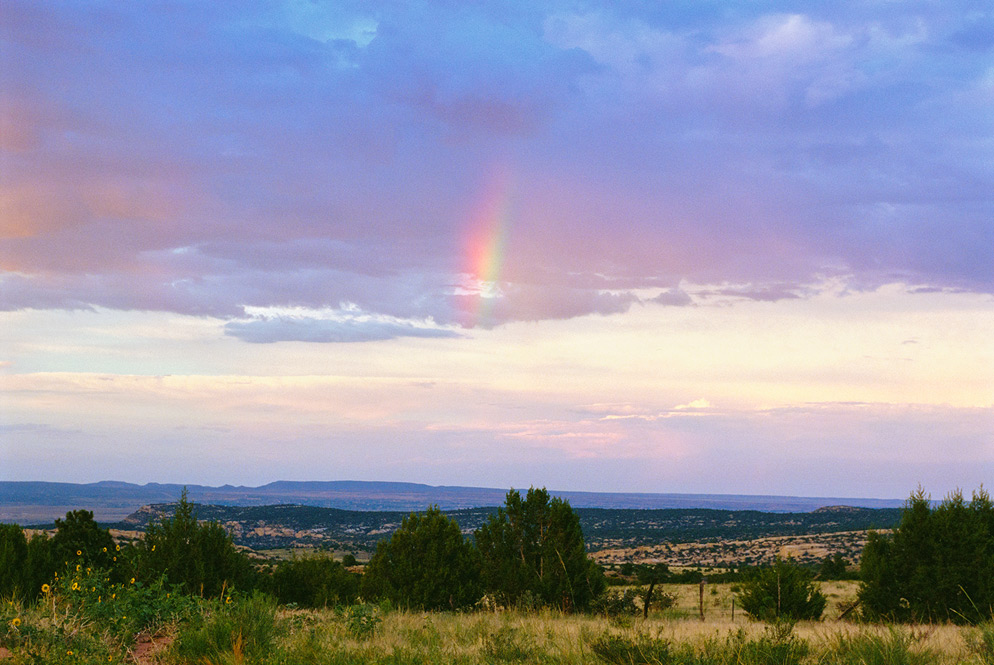Weather Report: Changing Conditions Followed By Opportunities For Beautiful Images
Jim kept his distance when he photographed this area of large hail that had broken off from a passing storm in north central Oklahoma. "The green color is due to sunlight interacting with the moisture of the storm—specifically the ice of the hailstones," he says. D3S, AF NIKKOR 24-85mm f/2.8-4D IF, 1/20 second, f/7.1, ISO 800, manual exposure, Matrix metering.
Photograph the weather?
By definition, weather is the state of the atmosphere, and that's a tough subject to capture. But the visual manifestations of the states of the atmosphere? Now you're talking photography. Weather phenomena are often beautiful, dramatic and eminently photogenic subjects.
We spoke recently with Jim Reed, who's been chasing down weather for over 25 years. In fact, he's been referred to as a storm chaser, but he's not a big fan of the term. "I like to say I photograph the weather," is his low-key description of the pursuit of the "optical phenomena" associated with common and some not-so-common weather events—like rainbows, sundogs, cloud formations, hail curtains, rays of sunlight and more rainbows.
"I think of optical phenomena as the visual ways in which weather conditions are presenting themselves to us to be photographed," Jim says. "They are essentially light interacting with water, the atmosphere and particles in the atmosphere. What I love about these phenomena is that they're very soothing and inspiring. I walk away feeling energized and hopeful."
And he walks away with artful, intriguing, storytelling images of the variety of weather.
If you want to do the same, Jim's got some advice—and it starts with safety. Simply, don't ever put yourself in danger in pursuit of a picture.
What You'll Need
Weather images are available to all, throughout the four seasons, wherever you are. What you'll need to capture them is a versatile wide-angle zoom—over the years Jim's used several, including the AF Zoom-NIKKOR 35-70mm f/2.8D, the AF-S NIKKOR 24-85mm f/3.5-4.5G ED and the AF-S NIKKOR 24-70mm f/2.8G ED—and perhaps a long-ranging telephoto—Jim's choice lately is the AF-S NIKKOR 80-400mm f/4.5-5.6G ED VR—which comes in handy when he wants to keep his distance from wilder weather but still be in reach of photographs. "For me, though, 24 is the magic number," he says. "Anytime you want to photograph optical phenomena in association with a landscape, having 24mm is pretty handy."
A tripod used to be an essential piece of equipment for him, and he still carries one, but its use has declined. "The change came with Vibration Reduction lenses and the ability to boost the ISO on my cameras to get faster shutter speeds."
What I love about these phenomena is that they're very soothing and inspiring. I walk away feeling energized and hopeful.
He also once relied on a circular polarizing filter to enhance a rainbow in an image, but that's changed also. "Couple the sensitivity of the cameras with image-editing software and I can basically add the filter effect or compensation afterward." Same for the graduated neutral density filter he once used. "In Camera Raw, in [Adobe] Photoshop, I can pretty much create my own ND filter."
While Jim tries to get the hero shot in the camera, post-production is definitely part of the process for him. "I'd tell people to experiment with their settings to learn how to get most of what they want on the spot. I always try to get the best image in camera, so there's minimal post-production work, but I always shoot RAW because my goal is an on-screen image that matches what I saw. If post is needed for that, I'll do it gladly."
What to Look For
Rainbows might be the most popular weather-related subjects for photographers. In Jim's pictures, and in yours, they can be the main subject or part of the background, adding color, shape and eye-catching interest to a landscape that stands strong on its own.
If you're looking for a rainbow, you'll need two things: rain and sun. "The ingredients are water droplets and sunlight," Jim says. "Just be outdoors at the right time and look around. I joke with colleagues: 'Rain and sunlight? We should issue a rainbow watch.' It's that simple."
You do have to consider location, though. Jim advises that "to get a good, clean photograph of a rainbow you need an open space without distractions—no utility poles, power lines or cellphone towers—and that's getting tougher all the time. So wherever you live, get to know the locations that will give you clear, open areas, and when a rainbow alert makes itself known, be there. Preferably a slow-moving rainstorm followed by clearing and sun—that's your clue. The more you do it, and the more you learn, the better you get and the more fun it is."
Rainbows aren't the only photogenic subjects rainstorms can provide. "I always look for a shelf cloud associated with a thunderstorm, most often a strong thunderstorm," Jim says. "it's a feature on the leading edge of the cool air of the storm, and it looks like the old cowcatcher on the front of a locomotive. The winds shape it in conjunction with temperature change."
If you have a radar app on your smartphone—and who wouldn't?—look also for a bow-shaped thin green line in the radar display. "That's precipitation," Jim says, "and it's the gust front—cool rain and cool air coming out of the storm. If you wait for the wind to pick up and the temperature to drop, things will be changing in the sky, and there's a good chance for some photogenic atmospherics."
Be aware of not only nearby atmospherics, but also distant events that will affect them. "In the west recently we had a lot of wildfires, and the smoke eventually drifted into southeast Minnesota where I'd been shooting."
Of course there's no shortage of visual and verbal weather predictors available online, so you can know when and where to look for weather-related photo opportunities.
That's about it. Your camera, a few lenses, some basic weather information and you're pretty much set if you've got an adventurous spirit—and access to wide open spaces.

